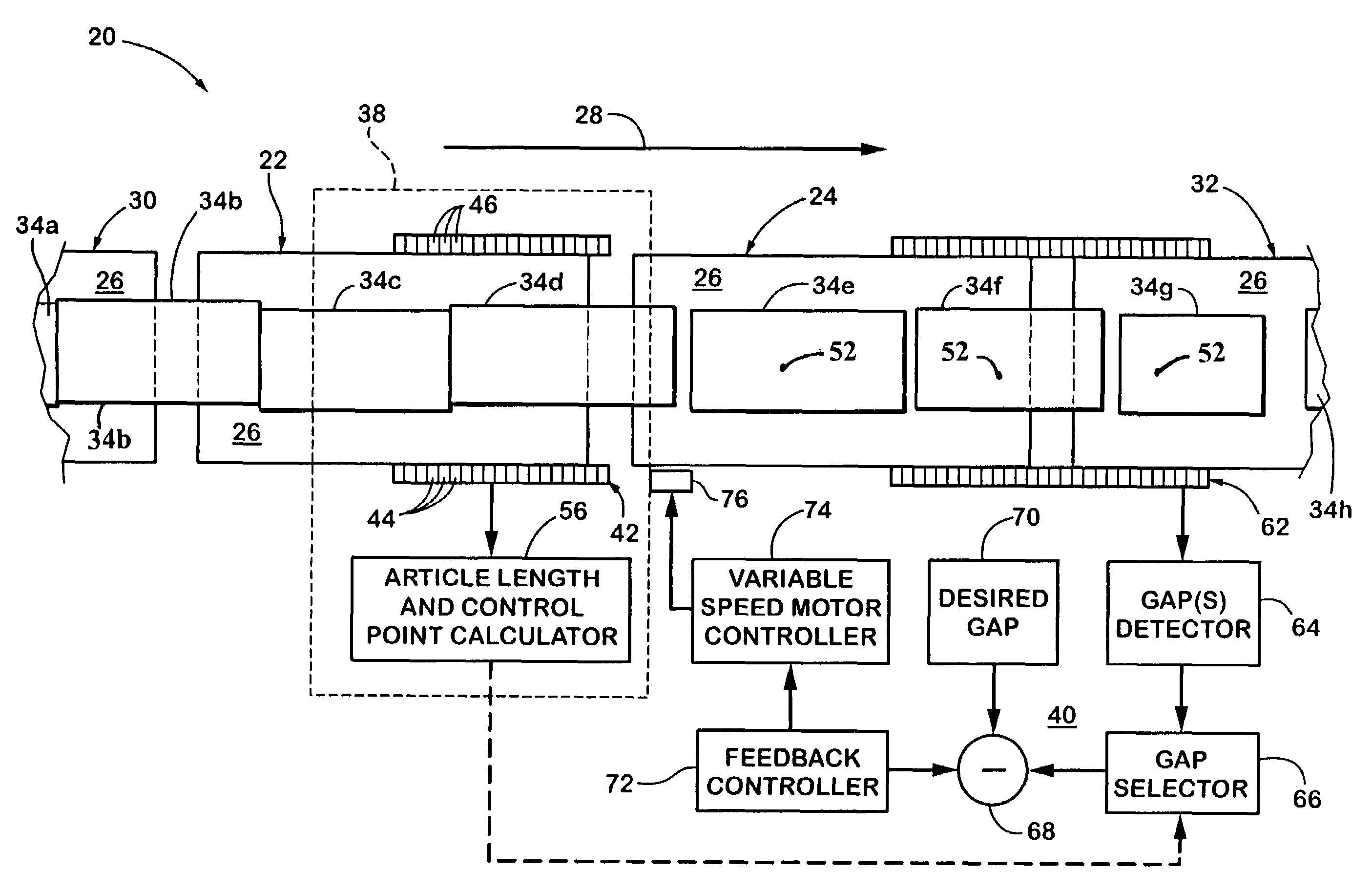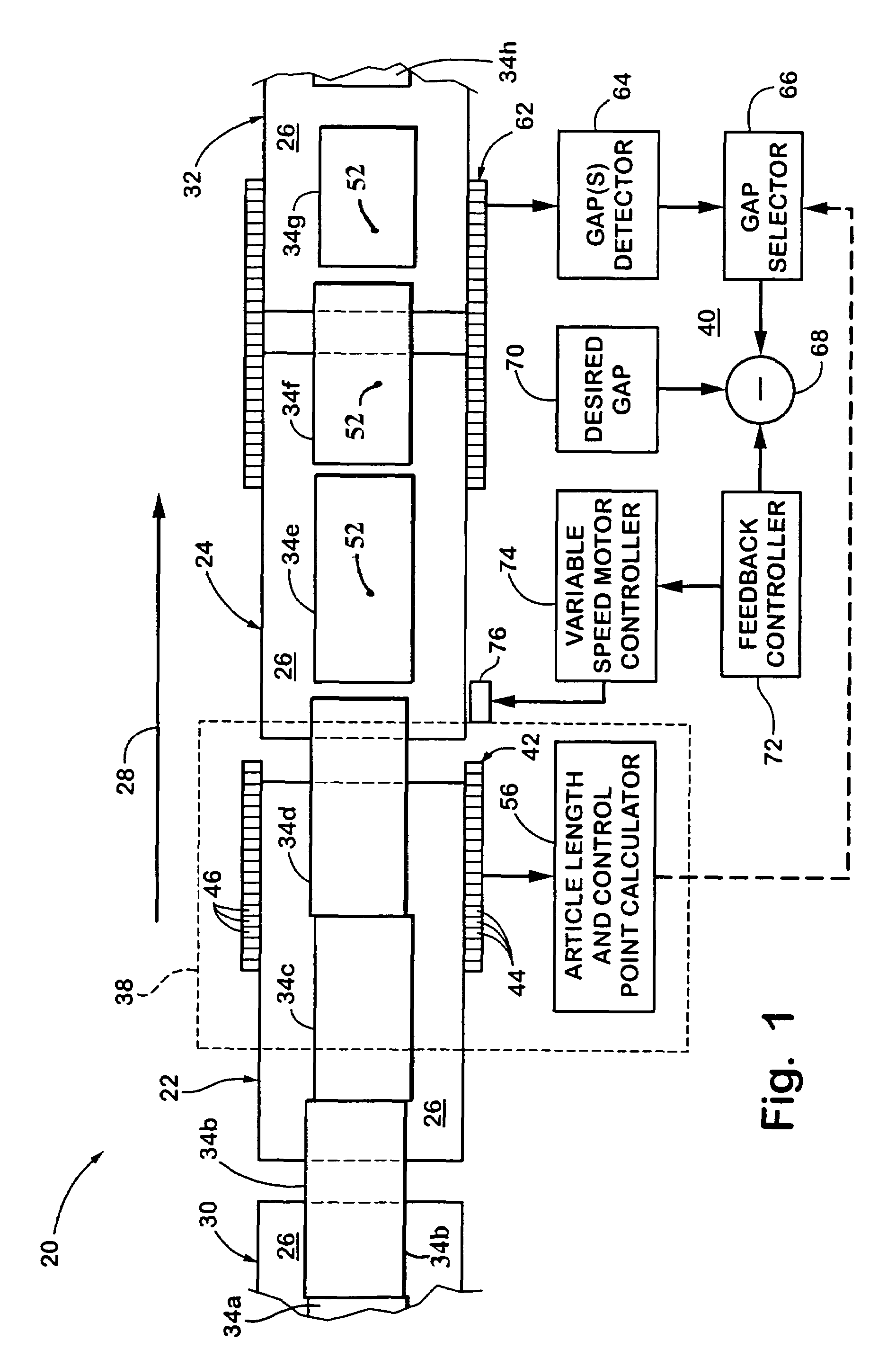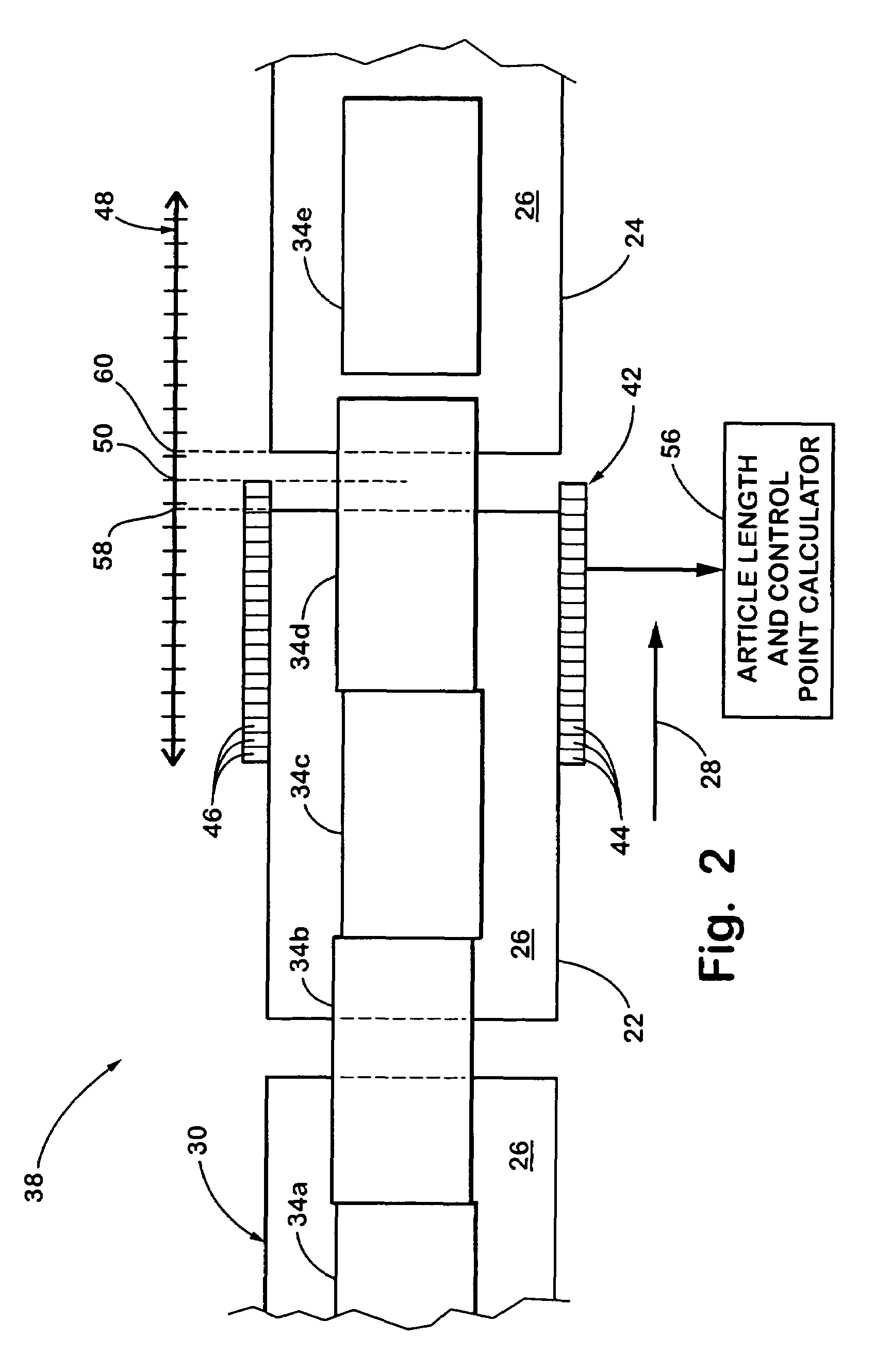Conveyor induct system
a conveyor and inductor technology, applied in the direction of conveyor control devices, conveyor parts, transportation and packaging, etc., can solve the problems of not being diverted, affecting the throughput of the conveying system, and affecting the performance of the prior, so as to improve accuracy and consistency, and the speed of the effect of speed
- Summary
- Abstract
- Description
- Claims
- Application Information
AI Technical Summary
Benefits of technology
Problems solved by technology
Method used
Image
Examples
Embodiment Construction
[0017]The present invention will now be described with reference to the accompanying drawings wherein like reference numerals correspond to like elements in the several drawings. A conveyor induct system 20 is generally depicted in plan and block diagram form in FIG. 1. Conveyor induct system 20 comprises two subsystems which can be utilized independently from each other or in combination with each other. One such subsystem is a control point determination module 38 which serves to accurately determine the location of the control points on individual articles, as will be explained in more detail below. The other subsystem of conveyor induct system 20 is a gap control system 40 which controls the speed of one or more of the conveyors in order to create a desired gap between articles as they exit onto a take-away conveyor 32. By way of background, such controlling of gaps is also described in commonly-owned U.S. Pat. Nos. 5,267,638 and 5,038,911, the disclosures of which are hereby in...
PUM
 Login to View More
Login to View More Abstract
Description
Claims
Application Information
 Login to View More
Login to View More - R&D
- Intellectual Property
- Life Sciences
- Materials
- Tech Scout
- Unparalleled Data Quality
- Higher Quality Content
- 60% Fewer Hallucinations
Browse by: Latest US Patents, China's latest patents, Technical Efficacy Thesaurus, Application Domain, Technology Topic, Popular Technical Reports.
© 2025 PatSnap. All rights reserved.Legal|Privacy policy|Modern Slavery Act Transparency Statement|Sitemap|About US| Contact US: help@patsnap.com



